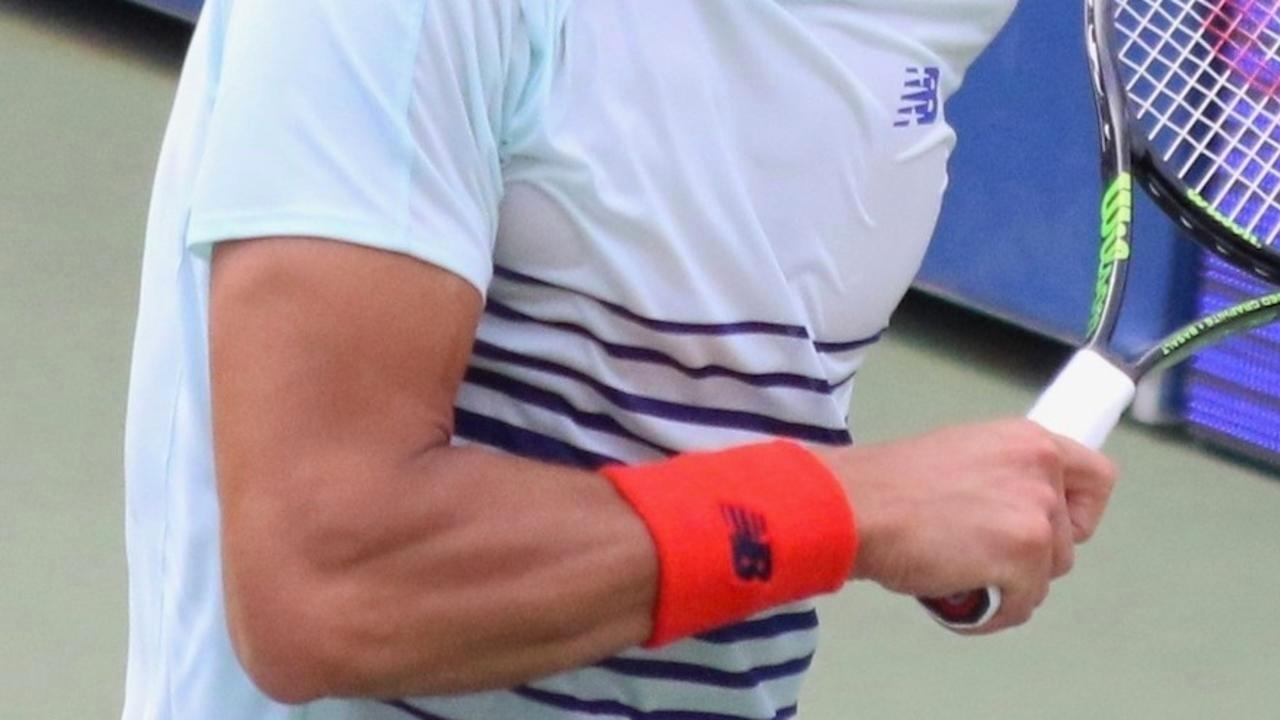Tennis Elbow
Jun 07, 2018
Upper limb injuries in tennis are the most common overuse type problems and the most common is Tennis Elbow.
Tennis Elbow
- or lateral epicondylitis is an extremely common condition where the tendon attachment (origin) of the wrist and finger extensor muscles (back of the forearm) becomes irritated and painful due to excessive amounts of the activity causing tissue overload. This can occur in a variety of activities like tennis, golf, and even typing.
In tennis simply increasing the amount of practice and play to quickly can lead to an overload, inflammation of the tendon, and pain. However, many other factors can also influence the situation. These may include the size of the racket grip (too big or too small), the string tension, the type of play (double-handed backhand is less provocative). Other less obvious culprits include poor posture (especially of the shoulder blades) and poor core control, which can have a substantial influence on the kinetic chain and cause neck and shoulder issues as well as neural mobility and sensitization problems. This last being able to amplify the amount of pain you experience from an injury.
As you can see Tennis Elbow, although common can be complex and requires a thorough assessment to correctly identify each athlete’s specific issues before a rehab protocol can be developed.
The good news is overuse injuries are mostly preventable and that includes Tennis Elbow. A well-designed training program that includes tennis load management, as well as specific tennis strength and conditioning of the whole body including wrist and forearm, with a significant core and postural correction component and addresses neural mobility, will go a long way to avoiding these overuse pathologies.
In our modern society, the use of mobile phones and laptop computers are causing a lot of problems relating to poor posture, especially in our teenagers. Managing this is very important to the success of our postural correction work. Young athletes are likely to be spending more time sitting in front of screens than generations past. This fact alone can impact injuries such as Tennis Elbow, due to the fact that they are more prone to developing poor posture, which can affect tennis technique, kinetic movement, and joint stability.
To fully rehabilitate an injured athlete, we first must look at the underlying causes. In the case of Tennis Elbow, it may be poor technique, wrong size grip, too much hitting, using wet balls, or poor posture. Just treating the injury site, itself may be a short-term solution. First look at any changes you have made (new racket, grip size, technical change, extra duration in practices) Look to modify these if you feel it may be the cause.
It always best to seek professional treatment for any injury. Following an injury, a plan is the most effective way to treat injury. Once the injury has settled down, you can start to perform some rehabilitation exercises. The exercises performed in the videos below will help prevent Tennis Elbow and also strengthen up the appropriate weaker muscles of a recovering injured athlete.
Tennis Elbow Video
Please note these are general exercises only.
All exercises are 3 sets of 5 reps increasing to 15 reps before increasing load, (increase by 1 rep per set per day)
The eccentric, (lowering phase), of all exercises, is to be emphasized as research shows this type of tendon loading produces the best results.
Not all Tennis Elbow problems are the same and do require a thorough assessment to ensure an appropriate program is used.
- Clock face – Hold arm out with elbow at your side. Using a weighted lever preferably with a grip width, like your racket. Rotate the weight from 9 o’clock to 3 o’clock and back ensuring the lowering phase is slow, smooth, and controlled. The length of the lever can be adjusted to suit
- Radial deviation/Ulna deviation - Arm by your side holding a weighted lever like a sword, just using your wrist raise the weight up to horizontal and lower.
Next, hold weight like a ski pole and raise and lower this time the weight is behind you.
There is no magic quick fix for Tennis Elbow. Seeking treatment and following a rehabilitation plan is the best option. As with all injuries, prevention is the best cure. Keeping your body long and strong will help prepare it for practice and play. Combined with following an injury prevention program (shoulder, wrist, elbow, knee, and ankle stability) is your best bet for a long injury-free career.
Paul Bounty
APA Titled Sports Physiotherapist


